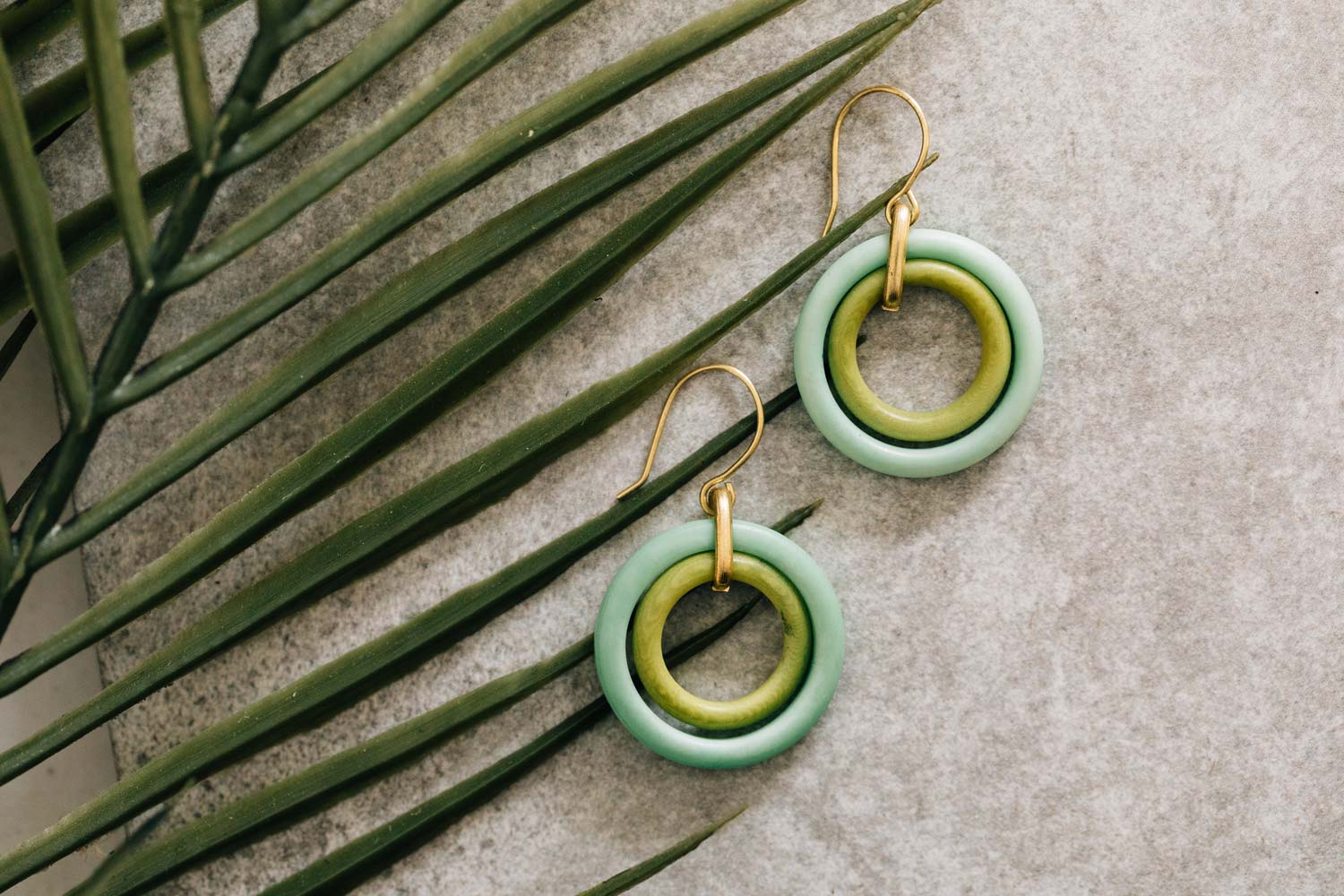
Tagua: A Miracle Material for Sustainable Jewelry?
A miracle material—with all the bright color of plastic and the luxurious texture of ivory. What is it? Not a riddle, but a tropical tree nut called tagua; a plastic alternative that South American artisans are making into sustainable jewelry.
When it comes to fashion jewelry, it can be tough to find pieces that are made with high-quality, natural materials. So much modern jewelry is made from something synthetic and, while plastic might seem like the only way to achieve a truly saturated summer color, a “new” material is making its way into stores and into our earth-loving hearts.
The perfect summer jewelry is easy to wear, comfortable and light in the humid summer months. Tagua delivers all of those qualities.
Tagua takes well to colorful dye and has a close, hard grain, resembling ivory. So much so, that it has come to be known as “vegetable ivory.”
Sourcing & Sustainability:

Sourcing & Sustainability:
In the beginning of the 20th century, it was common for buttons to be made from ivory, but as animal rights became imperative, tagua nuts were discovered as an alternative to elephant tusk. For several years, they were imported to the United States from Panama, Colombia, and Ecuador, but were quickly replaced by more cost-effective plastics and the miracle material was nearly forgotten forever.

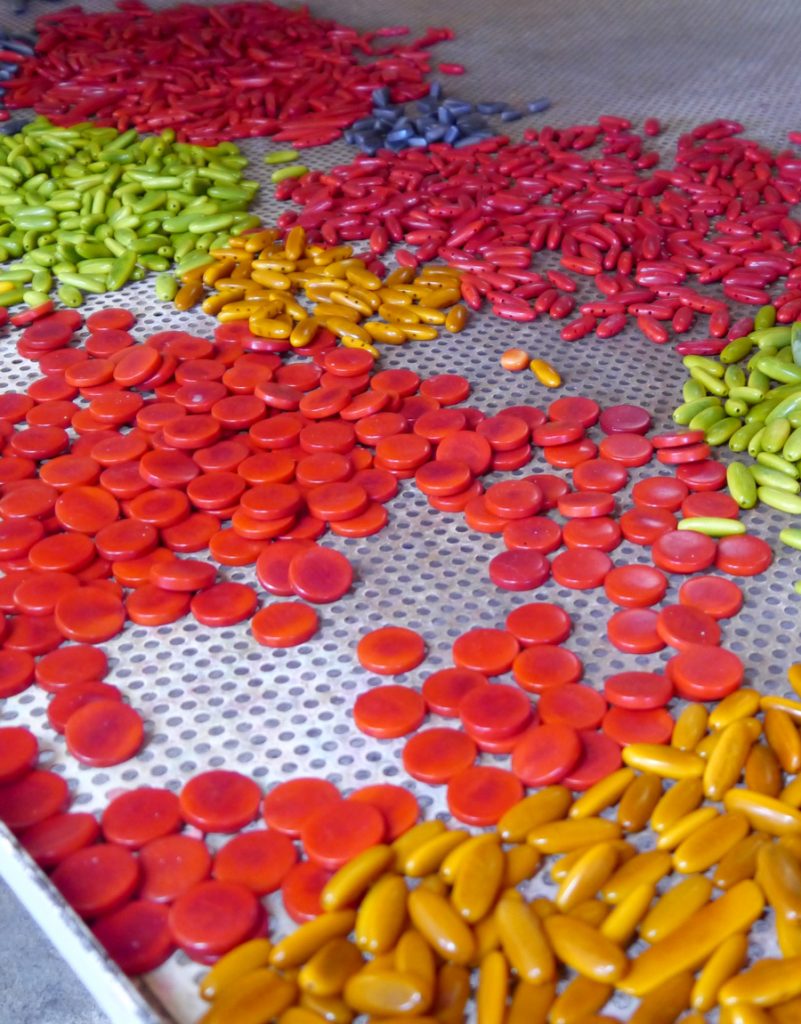
Thankfully, the focus on environmental conservation in recent years has once again brought tagua into the spotlight as an alternative to plastics, (which are not biodegradable) and a viable option in sustainable jewelry production.
Tagua nuts fall to the ground when mature—so harvesting is not damaging to the tree. Once a tree begins to produce fruit, it will continue to do so for the next 100 years, proving to be a renewable resource that also conserves the environment for the communities in which they grow. Not to mention that it’s completely natural and safe for the makers who work with it, as well as the customers who wear it.
Meet a Maker:
One of the makers who produces tagua nut jewelry is Claudia Zambrano who has been working with the Sapia artisan group in Colombia for 10 years. She loves solving small problems with new techniques, and using her creativity to produce new designs for jewelry. Mother of four, she lives in a small home high in the hills of the Ciudad Bolivar, one of the most populated and conflictive areas of Bogota, Colombia.
She first started working with tagua when Sapia trained her to make simple bracelets. Through the years, Sapia has encouraged her creativity and today, she runs her own jewelry workshop, creating new and innovative jewelry designs while earning a fair and regular income. This work allows her to save up money for repairs to her home and she has free time to spend with her family, including her three young granddaughters.
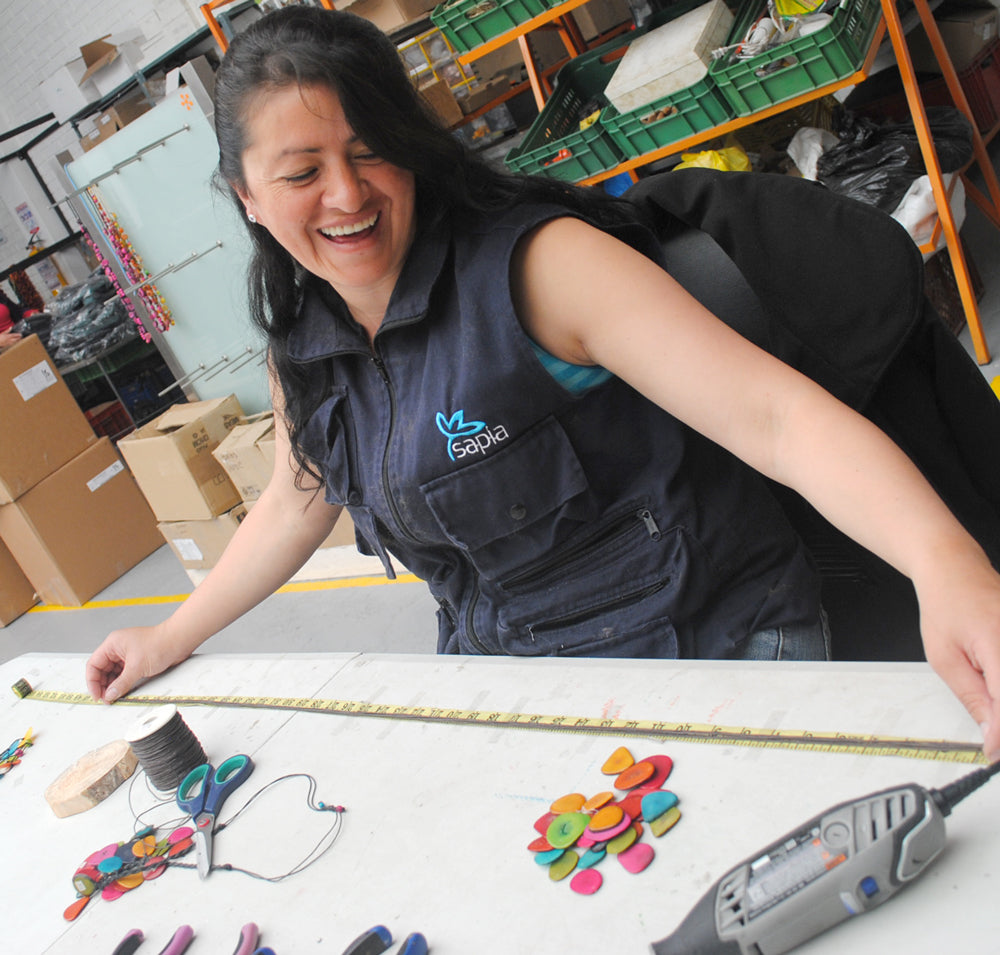
She feels good about having a way to improve her community by employing neighbors, teaching them to work with tagua and empowering them to create their own beautiful jewelry pieces to be sold all over the world.
Explore the Tagua Collection here.
Want to see the process in action? Check out this Transforming Tagua video!
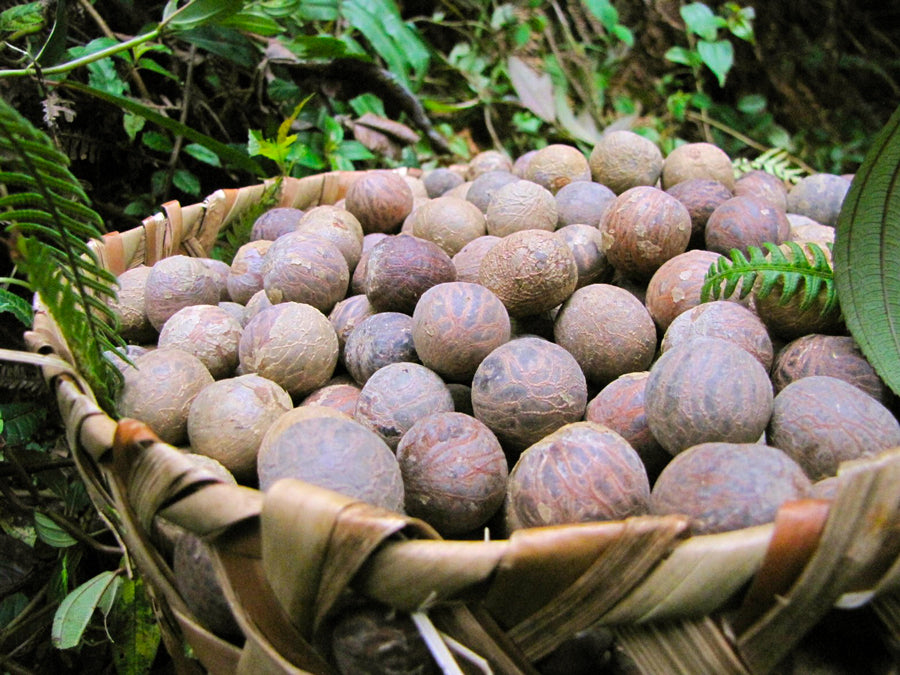
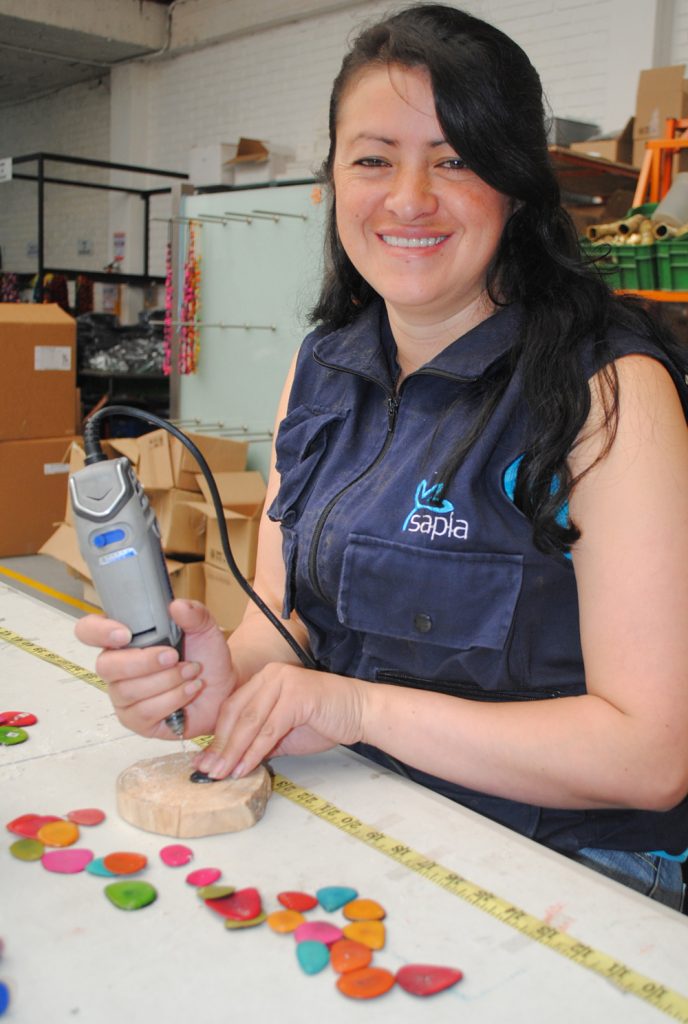

Leave a comment